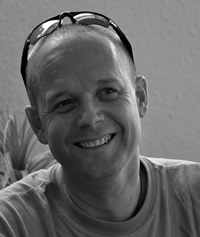About this Blog
This is the fifth in a series of blog posts about major Joomla websites and the developers who built them.
- First was Jack Bremer and the U.K. arts website theArtsDesk.com.
- Second was Fotis Evangelou and the Greek sports website Gazzetta.gr.
- Third was Dan Lopez and Linux.com.
- Fourth was Azrul, Mike Carson and Sam Moffatt about Linux.com.
This week we're talking with Matthew Philogene about his role with Afro.who.int, a World Health Organization website.
1) Hi Matthew. Could you tell us a little bit about yourself?
 "Offline" I enjoy Travelling, Hiking & camping, Rock climbing and Off-the-beaten-track Travel to remote parts of South Africa (no-internet!!). All of this is off-set by the hard work we do Online in Web Strategy Development & Design from our offices, located in Cape Town, South Africa.
"Offline" I enjoy Travelling, Hiking & camping, Rock climbing and Off-the-beaten-track Travel to remote parts of South Africa (no-internet!!). All of this is off-set by the hard work we do Online in Web Strategy Development & Design from our offices, located in Cape Town, South Africa.2) What or who is Afro.who.int?
The World Health Organization (WHO) is the specialized United Nations agency for global health matters. The mandate of the Organization is defined by its Member States in the WHO Constitution adopted in 1946 that determines the objectives and functions of the Organization, its membership and its organs. The WHO African Region is one of the six regions of WHO. Afro.who.int is the Regional office for World Health Organisation (WHO) in Africa.
3) How did the project with Afro.who.int come about?
4) Do you know why they chose Joomla?
A comparison was made with other CMSs and Joomla was identified as the CMS that would meet our needs. Joomla was also being used by another region in WHO enabling more internal collaboration and information sharing by using the same system. Our company supplied the analysis which helped in the decision making process to choose Joomla! as the preferred system.
5) What extensions did you use in building the site?
- Docman
- Joomfish (Thanks Alex Kempkins and his team for the good support on this)
- Frontpage Slideshow
- Superfish menu (customised for overlay with the second split menu)
- Custom dropdown module to pick and choose menus (This menu system lists all menus, based on an ajax script, it also adheres to the level when choosing)
6) What obstacles did you come across during the build?
- Communication: This was a huge challenge. We did not meet the client face to face, and telephone / internet access to the main WHO headquaters in Africa (Congo) is not the best there is. So there was often times when there were days of delays.
- Hosting: I am sure that when we say we had no issues no one will believe us...Developing on a dev area certainly does not help as the performace on live is so different. A good choice is not made easier when the client specifically wants the server to be in a certain country. Our choice was either Switzerland or Germany and we chose a hosting company where we could speak to the company on the telephone and still have decent email support.
- Design amendments: When we had drafted the first designs, it took almost 2 months to get the first approval back. Approval by committee, as this is an NGO... yes we had to be very patient.
- Content: This was and still is an issue, as there are many sub divisions in the organisation. Each person responsible for the divisions had to get the content in 3 langauges, English, Portugese and Spanish. To make matters worse the offices are spread around the continent, so gathering of information was a very long process.
- Translation system vs SEF: Alex Kempkins and team helped us solve this ... :-) Cant go into more details, but needless to say we had a huge learning curve on this one.
- Uncovering all the redirects from the old site: This was vital before launch, you have no idea how much Google had spidered from the old site...The redirect list is very long.
- IE5 ?!?!?: Yes would you believe, this was asked for, as some users in Africa still use IE5 !! We said sorry, can't help and so this idea was killed...
- Client comment: Because the tool was very new to us the development took much longer than initially anticipated. We found improved ways of implementing some sections of the site at a later stage and this led to redoing some of the work which was a bit of a challenge due to the size of the site.
7) How successful has the site been as a whole?
Since the launch the stats have grown everyday. A breakdown as follows:
- Online since 1 Feb 2010
- Average of 2400 visitors per day
- Monthly Bandwidth close on 800GB + per month
About This Interview
Steve is a member of Open Source Matters board which helps the Joomla team keep the project running smoothly. He runs Open Source Training.
We're going to wrap up this "Big Sites" series with two more interviews. Then we're moving on to talk with webdesigners and how they use Joomla in to help smaller businesses and organizations. If you'd like to be featured, email with these details:
- The website URL
- Why the site is interesting
- An email address for the developer
 Community Portal
Community Portal 